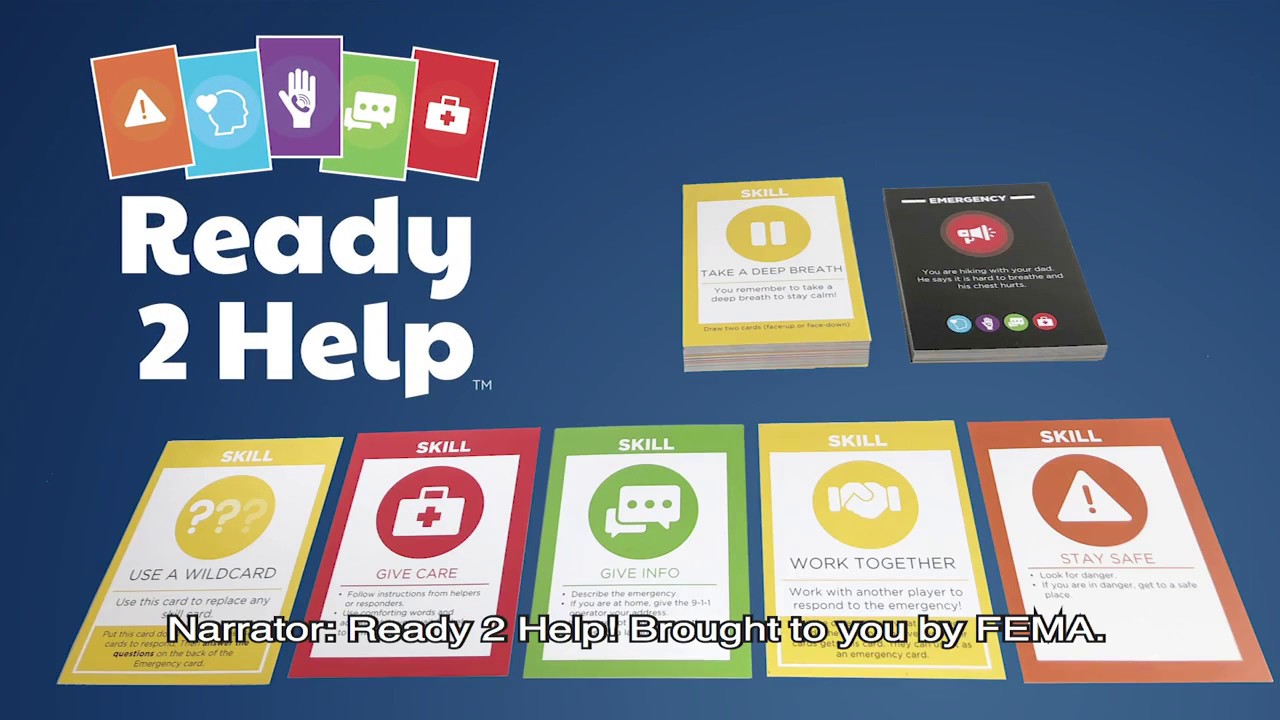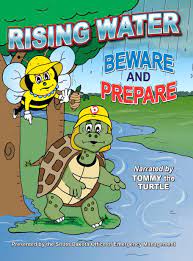Disaster Preparedness for Children
THE POINT
Prepared children make better prepared families and communities. Involving your children in the planning and preparing process will help the children cope with disasters.
DO THIS
Help children cope with disasters by using these strategies.
Involve children in family emergency planning and preparing activities.
Teach children the emergency protective actions.
VIDEOS
DOWNLOADS
- Emergency Preparedness for Child Care Providers Power Point
- Disaster Checklist for Child Care Providers
- Emergency Contact Card for Child Care Providers
- Emergency Preparedness Manual for Early Childhood Programs, with chapters on preparedness, response, and recovery.
- Sample Emergency Disaster Drills for child care programs
- Child Care Program Emergency Drill Log
- Disaster Prep Rally Lesson Books and Resources for School Grades
- Youth Preparedness Catalog
- Ready... Set... Prepare!
- Activity Book: Being Safe After a Flood
- Ready Wrigley - Books
- Prepare with Tommy the Turtle - Books
- Prepare with Pedro the Penguin - Books
LINKS
- 10 Tips for Helping Children Cope with Disaster
- Ready.gov/kids
- Helping Children Cope
- FEMA- Emergency Planning with Children
- CDC- Caring for Children in a Disaster
- CDC- Children In Disasters: Kids and Families
- Youth Preparedness Pinterest Board
- RCRC Toolbox
- National Youth Preparedness Council
- Training: IS-36.A: Preparedness for Child Care Providers
- Red Cross - The Pillowcase Project
- Red Cross - Game: Prepare with Pedro! An Adventure in Emergency Preparedness
- FEMA Course - Community Preparedness Planning Course: Integrating the Needs of Children in Disasters
- FEMA Course - IS-36: Preparedness for Child Care Providers
- FEMA Course - IS-366: Planning for the Needs of Children in Disasters
Children experience trauma and fear during a natural disaster.
If they know what to do during a disaster because they have practiced family disaster drills, they will be better off. When parents are calm, children calm down more quickly.
Before a disaster, parents can:
- Familiarize yourself with the emergency response plans of schools and/or daycare your children attend.
- Find out if the school/daycare will keep your kids or send them home in an emergency.
- Decide if your child gets into your home if you are not there.
- Decide if your children take care of themselves or if a neighbor takes care of them.
- Develop and practice a family disaster plan.
- Teach children how to recognize danger signals.
- Explain how to call for help (911).
- Help children memorize important family information.
- Help children memorize their street address, not the PO Box.
- Include children's toys and special foods in 72-HOUR KIT.
After a disaster, children are most afraid the disaster will happen again, someone will be hurt or killed, or they will be separated from family and left alone.
Parents can help minimize their children's fears by:
- Keeping the family together; do not leave children with relatives or friends - take your children with you.
- Calmly and firmly explain the situation and your plans.
- Talk to your children at eye level.
- Encourage children to talk about the disaster and ask questions.
- Include children in recovery activities by giving them chores that will help them feel they are helping things get back to normal.
- Reassure children with firmness and love.
- Sympathize with and resolve their anxieties.
- Hold your children and spend more time with them.
Other Resources for Children:
Know the Protective Actions
Teach children the protective actions for each of the disaster types. Visit the Protective Actions page to learn more.
Start a Youth Preparedness Program
Anyone can start a youth preparedness program, or join an existing one. The Youth Preparedness Catalogue is a great place to start if you are looking to implement a youth preparedness program or activity.
Building a youth preparedness program takes a lot of work. However, many resources are available to help you with the process. We’ll walk you through seven steps to implementing a youth preparedness program, and provide checklists and workbooks to help along the way. Many of these resources are available in both Spanish and English.
Children make up about 25 percent of the population of the United States and are the future of our communities. While they face unique vulnerabilities, they can also play an important role during emergencies. However, many programs do not consider children in their planning. It is important that children know what to do in an emergency and that all disaster planning, preparedness, response, and recovery efforts include children’s unique needs and abilities.
Getting Started
Youth preparedness is important to the resilience of any community. As the leader of a youth preparedness program, you are supporting the preparedness effort within your community.
Downloads
- Youth Preparedness Catalog: Disaster Preparedness Education Programs and Resources
- Implementing a Community-Based Program
- Youth Preparedness Program Implementation Checklist
- Youth Preparedness Program Implementation Workbook
Funding
To create a successful program, you will need the proper resources. This funding guide outlines a four-step approach to securing funding, including identifying the resources you need, engaging potential funders and keeping records of donations.
Risk Management
There are risks and liabilities to consider when putting together a youth preparedness program—just as there would be with any other program or activity. These documents present an approach for developing a risk management plan.
Resilient Children Resilient Communities Toolbox
Building Child-Focused Community Preparedness. Children rely on many people and organizations across a community, every day. Preparing these institutions makes our children and communities more resilient.
RCRC Toolbox
Ready 2 Help Game
Play this game and learn how to stay safe, stay calm, get help, give info and give care.
Ready 2 Help Game
Disaster Master Game
Disaster Master has 7 levels with decision making scenarios in a comic book like game.
Disaster Master
Build a Kit Game
Gather supplies needed to prepare for an emergency with this online game.
Build a Kit Game
Red Cross Pedro the Penguin Program and Game
Prepare with Pedro with the American Red Cross books and activities for children. You can use the animated videos as a supplement to the lessons in the Disaster Preparedness Activity Book. Also check out this game set:
Pedro the Penguin
Ready Wrigley
The Centers for Disease Control and Prevention, Office of Public Health Preparedness and Response, has a "Ready Wrigley" website to help kids learn about various emergencies. Ready Wrigley has books and checklists to teach children about what to do in emergency situations.
Ready Wrigley
Tommy the Turtle
The South Dakota Office of Emergency Management has developed children’s books featuring Tommy the Turtle to educate kids on disaster preparedness. These books urge them to be prepared and spark communication among families to plan for emergencies.
Tommy the Turtle






